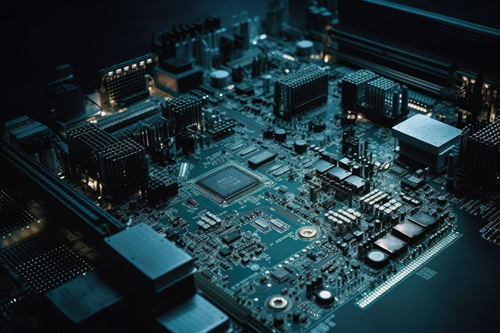
Miniaturization & High-Density Interconnect (HDI)
As PCBs are a foundational, critical component in electronic assemblies and across
the spectrum of market segments miniaturization and computing power of products
is ever increasing, PCBs and PCB assemblies also must relentlessly purse miniaturization.
For PCBs, this means high density interconnect technology. As manufacturing techniques
continue to evolve and improve, HDI technology will further reduce PCB sizes down
to .4 mm in the near future.
Material Advancements and Environmentally Friendly Manufacturing
Simply put, PCB manufacturing processes are not immune to need to political, climatic,
and social pressures and must move towards cleaner and more sustainable production.
PCB manufacturers have been in the crossroads of legislation and industry standards
in the past. For example, the required rollout of lead-free solder & RoHS regulations
requiring more energy-intensive manufacturing processes.
Traditionally, PCBs have been manufactured with epoxy-glass substrates, typically
viewed as an environmentally friendly material. New advancements see fiberglass
shifting to resin coated copper or liquid crystal polymers which are betterfor high
rates of data transfer.
This give and take between social need versus production technology and business
pressures will only increase as society continues to move forward.
Wearables
The trend for reduced PCB thickness and increased functionality continuously drive
the need for ever smaller and lighter boards / assemblies, not always possible with
existing technology and manufacturing practicies.
Health Care
Modern digital technology in medical uses not means data, records can be stored
in the “cloud” and health care can increasingly be administered by application and
smartphone.
Rapid development of medicinal technologies influences PCBs. For example, board
cameras are a recent development allowing for extremely high-fidelity cameras to
be affixed to a PCB directly. As such, they can be inserted into, swallowed by or
otherwise introduced to a human body.
Public Oversight
Board cameras and smaller PCBs are being implemented in vehicle dash cameras, and
wearable vest cameras for safety and first responder monitoring. Ever-smaller and
less obtrusive dashboard cameras, even connected hubs to interface with your phone
as you drive, have been introduced, or will soon be.
It’s an exciting time to be in the field of electronics and Printed Circuit Board production as new
consumer technologies, advancements in medicine, breakthroughs in manufacturing
and intense social pressures combine to drive product and technology trends.